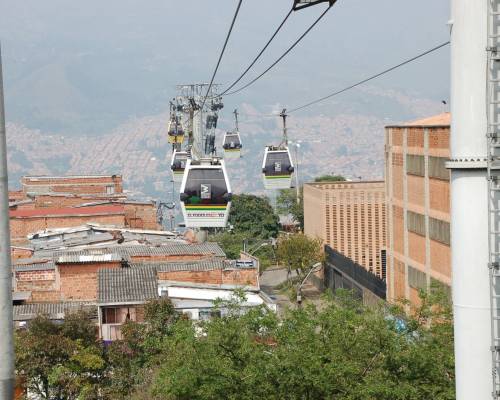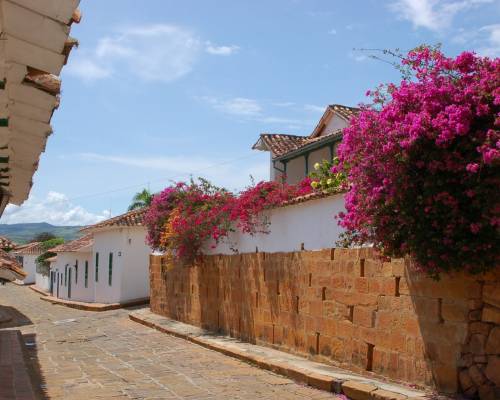Planning to travel to Colombia in South America? Read on...
7 December 2016 - RPS Partnership
We can provide you with advice and training for travel to Central and South America. Our Lead Consultant has just returned from Mexico and can provide up to date and up to the minute advice. Contact us on [email protected] for training either one to one or as a group.
Our good friend and colleague, Charlie McGrath of Objective Travel Safety, has just returned from a trip to Colombia and writes this light hearted piece for RPS Partnership, on travelling around the country as a backpacker.
He writes....
Travelling to Colombia
In the middle of November 2016 I returned to Colombia for the first time since 1990. The country has clearly had a torrid last two decades (well really five), just mentioning it’s name prompt comments about Pablo Escobar, rebel gangs and a generally thoroughly dangerous place.
Happily, things are improving, Escobar met a sticky end in a roof top shoot out in 1993 and from the turn of the century President Uribe took on the rebel groups, principally the FARC and ELN, they are now at the negotiating table.
Many parts of the country are still advised as “all but essential travel” on the British Foreign Office website, but they are looking to relax travel advice in the coming months and many places are teeming with visitors.
Medellin, once the murder capital of the World, has largely transformed its image and is now a beacon of hope for the future.
For anyone wanting to get a feel for the scale of the issues that Colombians have faced these last few decades I can thoroughly recommend Tom Fieling’s book ‘Short Walks from Bogota’; the scale of the atrocities on all sides especially of the right wing paramilitaries and FARC, is mind numbing.
All Colombians have been touched by it (the violence) and not having some understanding of the country’s past may leave the traveller with a superficial gloss. Tom’s book is a great way of understanding a little of what has gone on before, it perhaps explains why so many Colombians rejected the first peace plan with FARC. Its also worth remembering that the disparity between rich and poor is extreme, more so than in other Latin American countries.
I saw some extreme poverty on the north coast between Santa Marta & Barranquilla and it would be worse in isolated rural areas
Colombia is great destination for both the business traveller, the Gap Year traveller and those holidaymakers with more pesos in their pockets. On this short trip I was primarily winding the clock back to my youth, staying in dormitories in hostels, taking night buses but I also did a bit of jetting about, as time was short.
Whilst crime is clearly an issue, I had no security problems but I was careful. I carried a passport in a money belt and if I was going out in the evenings, I just took cash and I always had a reserve so I could hand over my ‘mugging money’.
I was saddened to read a Japanese business man had been murdered in the last week of November by chasing after thieves who had robbed him. Unless one complies in the event of a robbery in Colombia you risk the significant chance of being killed. Whether you believe in heaven or hell, you can’t take your cash or iphone there, so just hand it over.
Here are a few general observations and tips:
• People are generally very friendly. Colombia is a terrific destination
• Speaking Spanish on the north coast was a struggle, as many people speak part Creole
• English is not widely spoken outside business or tourist sights. Take a Spanish dictionary with you
• I found people welcoming as a British; it’s worth remember that Simon Bolivar wouldn’t not have succeeded without the help of the British Brigade
• Expect to see many police and military on the street – it’s just routine
• Colombia is more expensive that Bolivia and Ecuador but slightly less so than Argentina or Chile
• Budget travellers should plan for US$35 a day
• None of the buses have seat belt. Take a belt to tie yourself in
• However, most buses have a speed display so you can calculate the impact velocity!
• Taxis generally do have seat belts but you need to dig them out!
• Uber has landed and certainly in Bogota is deemed safer than normal taxis
• Check the weather; October & November are wet with many disruptions to road travel
• You need to carry ID; a passport is the only recognized form of foreign ID
• However if going out around the corner just have a PDF of your passport on your phone or hard copy
• In the big cities of Medellin, Cali and Bogota crime is common and high risk. Be prepared
• Bogota’s traffic is horrendous and it's becoming a badly polluted city
• I found Avianca airlines efficient and reliable
• Lonely Planet on iBooks is a compact guidebook solution
• Do check prior to travel, but Malaria is generally not a risk - Dengue and Chikungya Fever are
• If you want to learn Paragliding it seems that Bucaramanga is the best place
Details of this trip
I landed in Bogota and then flew up to Santa Marta. I then took a taxi onto Minca which is nicer place to stay.
I stayed at the excellent Casa Loma, a rustic hostel which involves a bit of a hike to get to. Top tip: you need a head torch if it’s dark.
My dormitory room cost Col $23,000 (about US$7). Mosquito nets were provided but with holes! Top tip: take masking tape.
There is good hiking, bird watching etc. There isn’t much at Santa Marta, many people go to the Simon Bolivar villa and place where he died.
I didn’t have time to go to the Cuidad Perdida (Lost City – a 4 day trek) or the coastal Tayronna National Park, both get very good reviews as does Punta Gallinas to the east. The latter is deemed a great place to chill and is popular with Backpackers.
Whilst I didn’t have time, I hear that some of the beaches on the pacific coast are well worth a visit, Guachalito & Almejal in particular. There is also good surfing and whale watching to be had.
Medellin, via a flight from Barranquilla, was my next port of call and my first time there. It’s not a pretty city but has improved in terms of security. It has a reputation for an excellent nightlife and the introduction of cable cars to link with the mountainside slum areas is helping to integrate the city. The metro line is good and efficient. Top tip: ensure your don’t take your valuables with you and hide your money well.
I then hopped on a night bus to Bucaramanga, a dawn bus to San Gil and breakfast in the picturesque town of Barichara.
Colombia has not generally been very good at preserving 17/18th Century colonial architecture, but Barichara is one of the very few well preserved towns and thus is a popular & worthy destination. Do take a bus or walk on to Guane, the fine church of Santa Lucia, which dominates the village square. On the architecture subject, I was depressed to see that in Bogota’s Plaza Simon Bolivar a few fine colonial buildings had be torn down and replaced by concrete blocks since my first visit in 1979.
San Gill is Colombia’s answer to New Zealand’s Queenstown, it's the country’s adventure capital, there are heaps of things to do; white water rafting, caving, waterfalls, paraglide, mountain biking and more.
I stayed at the excellent Hostel Macoondo, as did Tom Fieling on his short walk from Bogota, the hostel is very well run by an Australian and will organise activities even if you are not staying there. For the Backpackers Macondo has a good choice of private rooms, dormitories, good beer and even a 9 person Jacuzzi. Gringo Mike’s, is just around the corner and is a good place for lunch or dinner.
And so to Bogota. The oldest and nicest part is the Candelaria area. In its winding streets you will fine boutique hotels, hostels, restaurants, fine buildings, the whiff of dope and the odd criminal late at night if you are careless.
Plaza Simon Bolivar has fine buildings in its vicinity, the cathedral dominates the square and the small Santa Clara church is a gem, even though one has to pay to get in. The Gold Museum is a must, as is the Police Museum if you are interested in how Pablo Escobar was caught.
Bogota has a fine collection of restaurants, hotels and hostels. There is a good airport bus to and fro the main bus station, which is well served by taxis. The domestic terminal is a short walk from the International one, it’s hardly worth waiting for the transfer bus.
Happy and safe Travels from RPS Partnership and Objective Travel Safety.
Photos: Charlie McGrath in Colombia, South America



